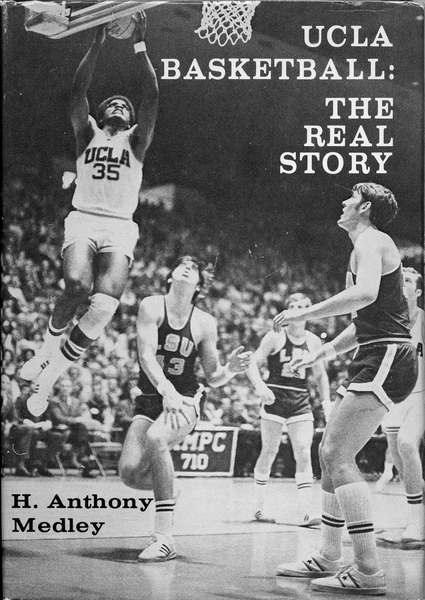|
Out of print for more than 30 years, now available for the first time as an eBook, this is the controversial story of John Wooden's first 25 years and first 8 NCAA Championships as UCLA Head Basketball Coach. This is the only book that gives a true picture of the character of John Wooden and the influence of his assistant, Jerry Norman, whose contributions Wooden ignored and tried to bury. Compiled with more than 40 hours of interviews with Coach Wooden, learn about the man behind the coach. The players tell their stories in their own words. Click the book to read the first chapter and for ordering information. Also available on Kindle. |
|
Checked Swings in Baseball: There Oughta be a Law! © 2024 by Tony Medley A rhubarb arose in the June 18 game between the Los Angeles Dodgers and the Colorado Rockies. In the top of the 9th inning, with two outs and the Rockies leading 9-8, the Dodgers had two men on base and Teoscar Hernández was at bat with two strikes on him. The pitcher threw a high fastball that Hernández started to swing at, but tried to hold up. This is called a “checked swing.” The first base umpire ruled that he did not swing, and the Rockies bench went wild. If it were a strike the game would be over with the Rockies winning. It became a huge issue when Hernández blasted the very next pitch out of the park for a game-winning home run. The “checked swing” is one of the anomalies of baseball. It occurs when a batter starts to swing at a pitch, but changes his mind mid-swing. If the ball is not in the strike zone, is it a strike or not? When this occurs and the home plate umpire does not know if the batter swung at the pitch, he defers to the first base umpire if it is a righthanded batter or the third base umpire if it is a lefthanded batter. That umpire then determines if the batter has swung at the pitch or not. That sounds pretty easy, so why is it an anomaly? The reason it is an anomaly is that the rules of baseball do not describe what is a swing! Apparently, the rules makers felt that it was enough to say that the ball is a strike if the batter swings at a pitch and it isn’t a strike if the batter does not swing at the pitch. But what is the definition of a swing? There is none! So how does the first or third base umpire decide? Apparently it is up to him alone. Thus, each umpire is the sole judge of what is a strike. That is ridiculous. The call of whether a batter has swung at a pitch should be subject to appeal. But since there is no rules standard for a “swing,” it is impossible to appeal. It is 100% up to the first or third base umpire and it could change with each individual umpire. This must be changed. There are two possible standards. The first is pretty easy: did the bat cross the plate? If the bat crosses the plate, it’s a swing, and therefore a strike. If it does not, it’s not a swing and, therefore, a ball. The other standard is, did the batter break his wrists. If he did, it’s a strike. If he did not, it’s a ball. Either standard would be reasonable. Or, both could satisfy the definition of a swing. My feeling used to be that it’s a strike if the bat crossed the plate. But now I feel differently. I think the batter has the right to change his mind mid swing, and that the standard for the definition of a swing should be solely if he breaks his wrists. That clearly is a swing. If he holds up on his swing without breaking his wrists, he did not make a physical swing. But whether one picks one or the other or both, at least there would be a specific definition of a swing to which an umpire may apply in making a decision. And then that decision could be the subject of an appeal and if the batter’s action did not comply with whatever standard is in the rule book, the issue would be decided fairly and equitably throughout every game. Below are two pictures of checked swings by Giants’ batters in a game with the Dodgers. The calls were made by the same first base umpire in swings two innings apart. In the first, the bat did not cross the plate and the batter did not break his wrist, but the umpire called it a strike. In the second, the bat clearly crosses the plate, and the batter does not break his wrists, but the umpire called it a ball. These two calls are logically impossible and blatantly arbitrary and unfair. A specific rule needs to be adopted defining a “swing” to ensure consistency and fairness.
|
|
|


